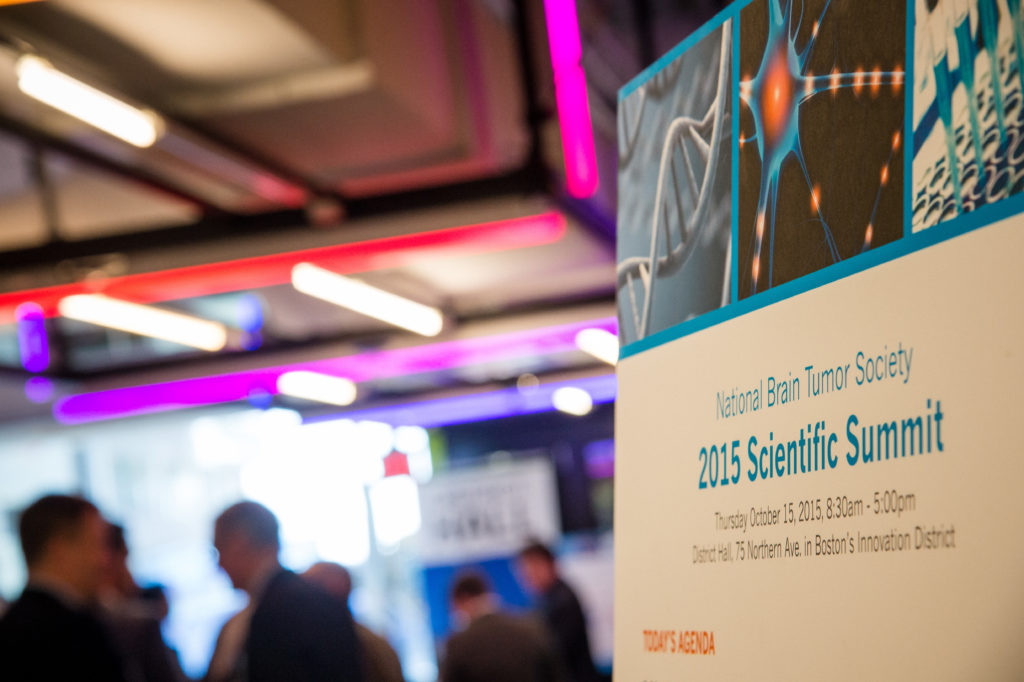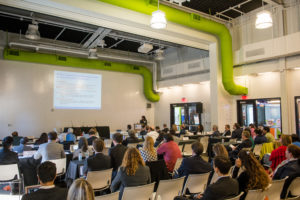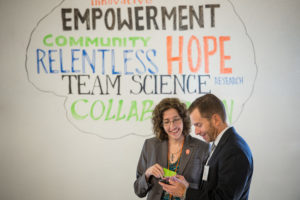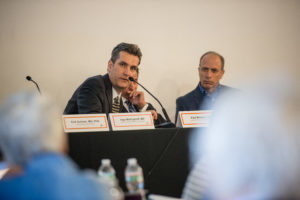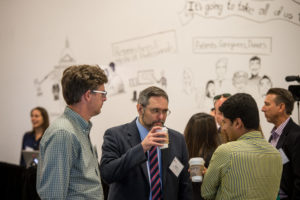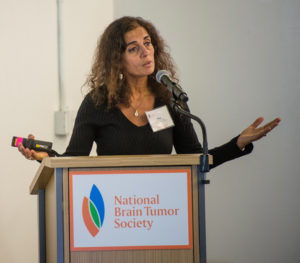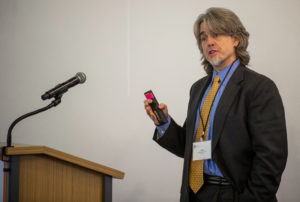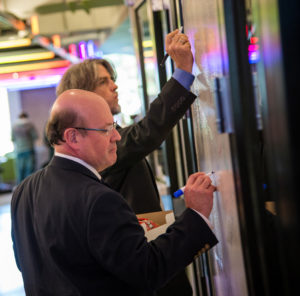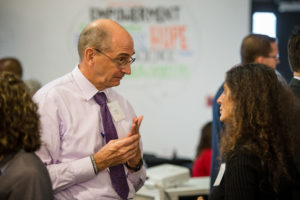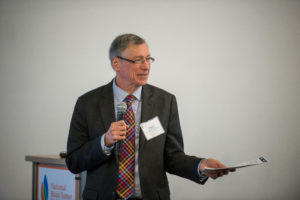Project Impact: Defeat Pediatric High-Grade Glioma Research Collaborative
Data sharing, collaboration, and translational discoveries are key in the field of pediatric brain tumors – particularly the aggressive class known as pediatric high-grade gliomas (pHGG) – because of small patient populations. We learned more about how the Defeat Pediatric High Grade Glioma Research Collaborative and other complementary projects are supporting these scientific needs to advance research.
Dr. Nada Jabado of Montreal Children’s Hospital shared how recent discoveries from her lab and other researchers demonstrate that pHGGs are “epigenetic” disorders of the developing brain – “brain development gone wrong.” Epigenetic means alterations happening in the cells not caused by changes to the DNA sequence. In the case of pHGGs, mutations have been found in a particular protein – called a histone – that helps wind and package the DNA in a cells’ nucleosome.
Dr. Jabado said the questions that remain for research are now:
- What are these mutations affecting inside the cells?
- How are they related to oncogenes (genes known to have the ability to cause cancer when mutated)?
- What is feeding them?
- What is the cell of origin?
In order to answer these advanced scientific questions, Dr. Jabado said, “We need to come together, and we are.” She described Project Impact’s Defeat Pediatric High-Grade Glioma Research Collaborative as a “collaborative network” of world-class pediatric brain tumor researchers committed to “open access” data and sharing information to speed research efforts, noting that all of the sequencing studies done as part of their work will be made publicly available.
Joining Dr. Jabado in this collaborative will be Dr. Stefan Pfister of the German Cancer Research Center Heidelberg, and Suzanne Baker and Kip Guy of St. Jude Children’s Research Hospital. The group will tackle complementary research efforts that aim to answer the questions above through projects that focus on pHGG biomarkers, genomics and epigenomics, developing preclinical models, and screening of potential therapeutic compounds that selectively kill pHGGs with histone H3 mutations.
Dr. Jabado noted this collaborative network would also look to link with other consortia of pHGG researchers.
One such is the Pacific Pediatric Neuro-Oncology Consortium (PNOC). Led by Drs. Michael Prados and Sabine Mueller of the University of California, San Francisco (UCSF) this group now features 14 member institutions from across the country, and is actively working with the Translational Genomics Research Institute (TGen) on a pHGG clinical trial platform. Through this work, PNOC and TGen have already identified nine potentially actionable recurring genomic alterations, and, importantly, nearly 25 potential existing drugs that could work against some of the mutations.
Dr. Mueller concluded by stating that, as their initial feasibility study was successful, the trial is now preparing to expand in collaboration with the Defeat PHGG effort
In order to continue to learn from studies such as the Defeat Pediatric High-Grade Glioma Research Collaborative and the PNOC/TGen effort – and as Dr. Jabado stated – data needs to be available for other researchers to easily access. As such, during our pediatric session at this year’s Summit we also heard from two experts in “Big Data,” both of whom represented companies which we are exploring partnerships with to help realize our data needs in pediatric brain tumor research.
Famed computational biologist, expert in genome science and bioinformatics, Harvard School of Public Health professor, and co-founder of the company Genospace, John Quackenbush, PhD, compared cancer to a “whodunnit.” Genospace builds platforms for storing, curating, and sharing genomic and other biomedical data, and he stressed the importance of these platforms in solving the whodunit of cancer.
“Today, I can put the cost of sequencing a genome on my credit card,” said Dr. Quackenbush. “This is exciting because we can get more data. But a large pile of data…is just a large pile of data. You have to be able to make sense of it through algorithms and analytics.
Dr. Quackenbush stated that the goal is to create a resource where people who understand the disease can access data easily and use it to, “ask the questions that will get better answers for patients.”
Following up on Dr. Quackenbush’s presentation, Michael Schmidt, PhD, founder and CEO of the big data company Nutonian, discussed the need for cutting-edge technology that can use “machine learning” or artificial intelligence to generate advanced algorithms to proactively mine data stored on platforms like those created by Genospace.



